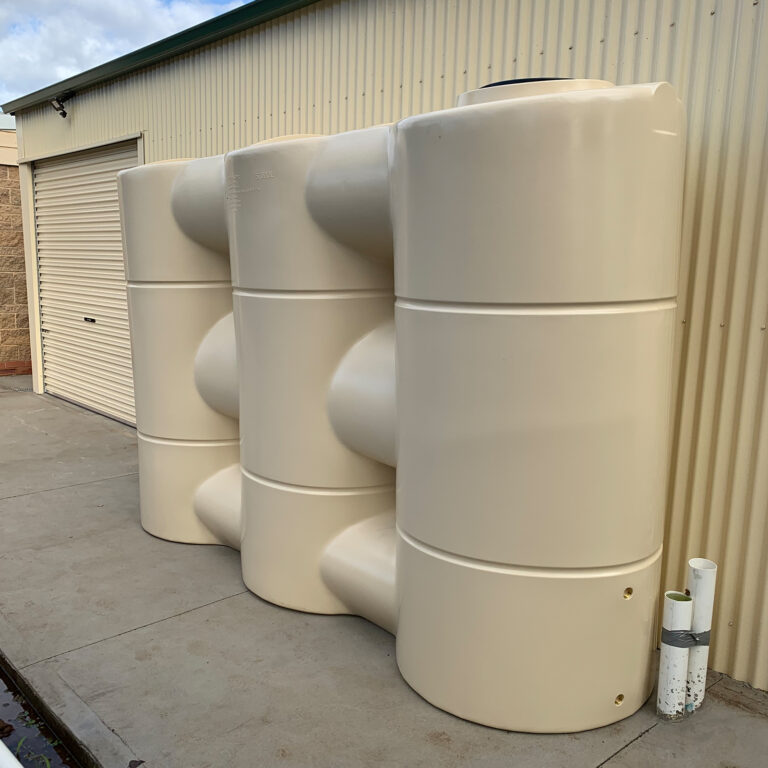Finest Slimline Water Tanks: Long Lasting and Compact Water Storage Options
Finest Slimline Water Tanks: Long Lasting and Compact Water Storage Options
Blog Article
Discovering the Various Uses Rain Containers for Residential and Commercial Characteristics
As the global focus on lasting living techniques proceeds to escalate, the application of rain storage tanks in both property and industrial setups has arised as an important service. The multifaceted usages of rain containers offer a compelling case for their fostering, not just as a useful water-saving step but also as a testimony to liable resource management.
Advantages of Utilizing Rainwater Containers
Using rainwater storage tanks provides numerous benefits for both homes and areas in terms of water conservation and sustainability. Among the crucial benefits of making use of rainwater containers is the considerable decrease in reliance on keys water system - Slimline water tanks. By capturing and storing rain for later use, people and communities can reduce their need for treated water, inevitably alleviating the burden on water therapy facilities and reducing power usage associated with water transport and therapy
Furthermore, rainwater collecting through storage tanks provides a trustworthy alternative water source throughout times of water restrictions or shortages. This saved rainwater can be utilized for different non-potable purposes such as irrigation, purging toilets, and washing clothing, minimizing the pressure on conventional water resources. In addition, using rainwater storage tanks can bring about cost savings for both homes and communities by reducing water costs and decreasing the requirement for pricey facilities expansions to fulfill expanding water needs.
In essence, the usage of rain storage tanks supplies a sustainable and eco-friendly technique to water monitoring, profiting both specific users and the broader neighborhood in regards to water conservation, cost-efficiency, and resilience.
Rainwater Tank Usage in Irrigation
Given the benefits of rain storage tanks in conserving water resources and reducing reliance on mains supply of water, a considerable application hinges on making use of kept rainwater for watering functions - Slimline water tanks. Rain gathering systems can successfully gather and keep rainwater, providing a sustainable water source for sprinkling yards, yards, and agricultural fields. By using rainwater for irrigation, building proprietors can minimize their reliance on treated water resources, bring about set you back savings and environmental benefits

One of the primary benefits of using rainwater for watering is its purity. Rainwater is normally soft and without the chemicals and ingredients often discovered in keys water, making it ideal for nourishing plants without the threat of hazardous impacts. In addition, rainwater is at ambient temperature, which can profit plant development by avoiding temperature shocks that can accompany cool mains water.
Rainwater Storage Tanks for Bathroom Flushing

Implementing rain tanks for commode flushing is an economical and eco-friendly method that can be quickly integrated right into both domestic and business residential properties. The kept rain can be used to purge toilets by attaching the storage tank to the existing plumbing system. This basic yet effective option can considerably lower water usage in a structure, particularly in locations where water shortage is a worry.

Incorporating Rainwater Containers in Landscape Design
These containers can catch and store rain runoff from roof coverings, which can then be made use of for watering yards, lawns, and plants. By making use of rainwater for watering functions, building proprietors can decrease their dependence on community water resources, leading to set you back savings and preservation of precious water resources.
In addition to supplying a lasting water source for landscaping requirements, rain tanks can also assist in managing stormwater runoff. By catching rain that would otherwise move right into storm drains, these storage tanks can mitigate erosion, minimize flooding threats, and prevent contamination of all-natural water bodies. Including rain tanks in landscaping can contribute to the total visual allure of the residential or commercial property, showcasing a commitment to environmental stewardship.
Industrial Applications of Rain Tanks
Utilizing rainwater storage tanks in business setups supplies a lasting solution for water management and conservation, benefiting businesses and the environment alike. Commercial applications of rainwater containers vary and increasingly popular due to the cost savings and ecological benefits they give. One vital business usage is for watering objectives, where collected rainwater check my blog can be used to water landscape design, yards, and farming fields surrounding commercial residential properties. This can bring about significant decreases in water costs and reliance on community water resources. check it out
Furthermore, rain collected in storage tanks can be dealt with and utilized for non-potable objectives within commercial residential properties, such as flushing toilets, cleaning, and cooling systems. Generally, the unification of rainwater tanks in industrial settings presents a sensible and ecologically liable strategy to water management.
Conclusion
From watering to toilet flushing and landscaping, the usage of rain storage tanks can help preserve water sources and decrease water costs. Overall, the adaptability and sustainability of rain tanks make them an important financial investment for any kind of residential or commercial property proprietor looking to boost water efficiency.
Report this page